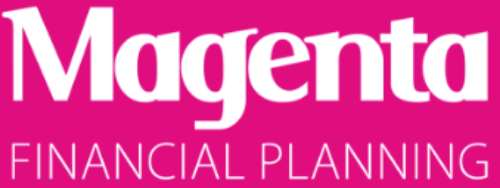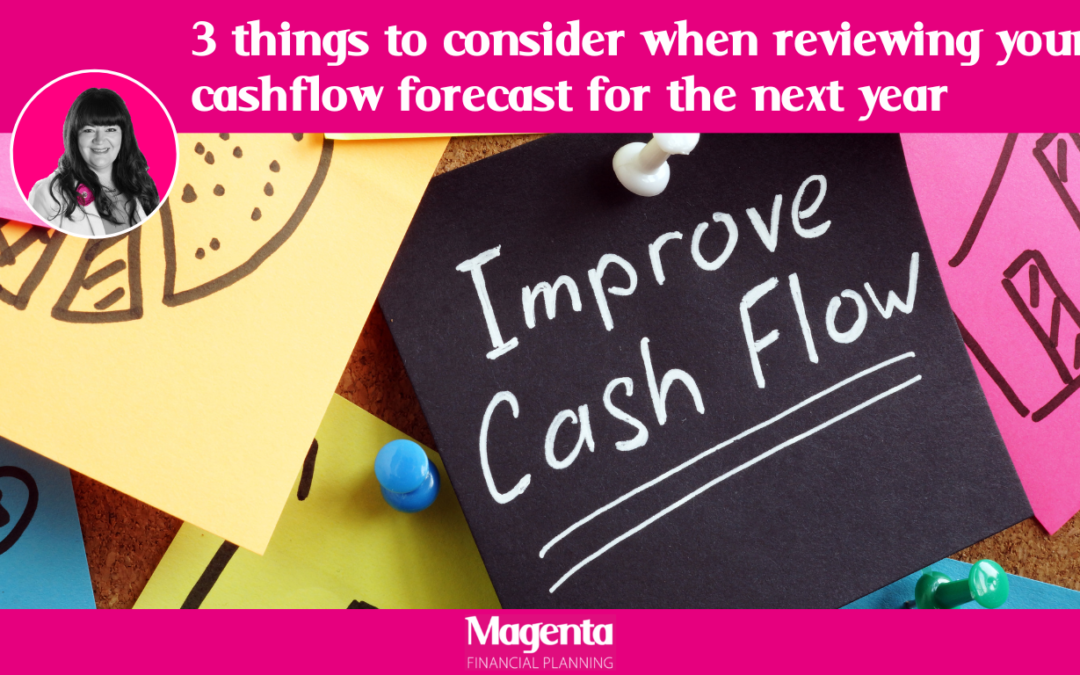As part of our usual annual planning exercise with the majority of our clients, during our annual planning meeting, we will talk about your plans for the year ahead and thoroughly review your lifetime cash flow forecast, taking into account any changes you’d like to model.
This is really important for Magenta to be able to understand your requirements, sense check objectives and potential big spends.
In order for us to be able to do this with you in our meeting, ahead of this we ask you to think about and review your figures, checking last year’s income and expenditure against your current income and spending, updating us about your cash holdings and any other assets that may have altered which we wouldn’t have regular updates about from investment managers.
Having now been advising clients using cashflow forecasting for over 12 years (no idea how I managed before using it?!) – I’ve realised that there are things that come up over and over again with clients. These things tend to generate worry, frustration inaccuracies and misunderstandings so I thought it would be beneficial in this blog to highlight three key areas for you to think about, for when it comes around to your next meeting and cashflow forecast review.
The cashflow is forward-looking
When it comes to forecasting, we aren’t that interested in what happened last year.
Don’t take that the wrong way!
This doesn’t mean we don’t care about how the last year has treated you, how your health is, what trips have or haven’t happened, what family events have taken place and what plans you have for your home.
We certainly want to speak about these things, as those things shape what the future could look like. We also understand that your figures of what you’ve spent last year do shape how things may look for you and help you to gauge forward spend.
However, when it comes to your cash flow projection figures then need to be looking forward. We don’t really need to know about the large one off spends you’ve already paid for, we need to know about any increases to your regular spending and any future one-off spending you need to budget for.
These costs tend to break down into three categories:
1) Day-to-day household and living (some of these may also be discretionary)
2) Annual discretionary budgets – for holidays or home refurbishments for example
3) One-off spends – garden work, new car etc
Usually, you’ll find the first in this list don’t alter too much and are easy to project forward. We also already factor in inflation (usually at 3%) into the figures we send you.
The third is also easy – they are one-off single big-ticket items that are pre-determined and usually well-planned, sometimes to the penny.
It’s number two in this list where people tend to get stuck and we find this goes a little awry. This is because we tend to look back and say “I spent this last year” and just go with that.
We instead need you to think “what do I want to spend in the future on this”?
This has been particularly tricky coming out of the pandemic. Many of my clients have been too nervous to travel and have not felt comfortable leaving the UK, or eating out as often. As we enter our third year with Covid in our lives, this now has started to feel like the ‘norm’ for spending, but I want to encourage everyone to consider if this budget will really be what you intend or want to spend in the future, as we emerge from the pandemic and travel becomes more normal again.
Accuracy is important, but it doesn’t have to be complex
The truth about cash flow forecasting is that if you put garbage in, we get garbage out. It won’t be right, it won’t be even close, and at Magenta, we base all our recommendations on this forecast – so it is really important to be accurate.
When I first build a cashflow forecast for a client I tend to find they want everything in and multiple scenarios. That’s ok because that’s often the stage of life those clients are in, needing guidance around a life change or having to make a big choice they need reassurance with.
Typically in the accrual phase of life we have slightly more complex forecasts.
However, as plans develop and particularly once clients are settled into retirement and income and expenditure settle down to a nice steady pattern, these things can be simplified.
In several instances, I can think of clients who have told me that they find updating all the individual items and the receipt of our spreadsheet “stressful” and “not fun”. If that’s the case – then let’s change it! After all, it’s your forecast and you can tell us how you’d prefer us to manage it. (Don’t worry we will still challenge you on assumptions if we need to.)
For some clients I now run their forecast with one item ‘overall expenditure’ – a value to cover everything – like an annual spending budget that they know they will be able to stick to. They don’t have to tell me how much was spent on food, council tax or clothes – they just tell me one overall figure. This helps them enjoy our meetings more, feel less stressed and stick to an overall budget. We know if this is right because each year we assess cash/capital requirements and know if the budget is fair and working out, or not. A win-win.
Others know how much they can save each month – and so this helps us make assumptions about spending.
Others like to split out discretionary costs from the day-to-day required living costs and have probably always kept a spreadsheet with figures each year, even before they became a client.
And then there are some who enjoy the process of reminding themselves about their figures last year and how the year stacked up and like to keep things the same.
Don’t be concerned about asking us to change things, if this suits you, and the way you keep your budget and records, better.
Income and tax
This is something that comes up in a lot of cases, especially for our retirement clients. The figures we use for income in the forecast is always Gross.
We know that it’s easier to grab the Net income for us when you complete your figures because you can look at what’s actually hit the bank account. But this is usually the figure after tax (net).
So, I’d ask first if you can see if you can find your P60 from your pension provider, or the latest update from the State Pension and give us those figures. But if you can’t find these, give us the net figure but let us know it’s this, because we can make some assumptions and round this up for you.
This does apply to employed income too, but I don’t tend to see this as much because with regular payslips it’s easier to know the tax position!
I hope these three things have helped or will help next time you get the telephone call that your annual planning meetings are due and then get the spreadsheet to update. As always, if you have any concerns, just pick up the phone and we can chat about what works best for you.

